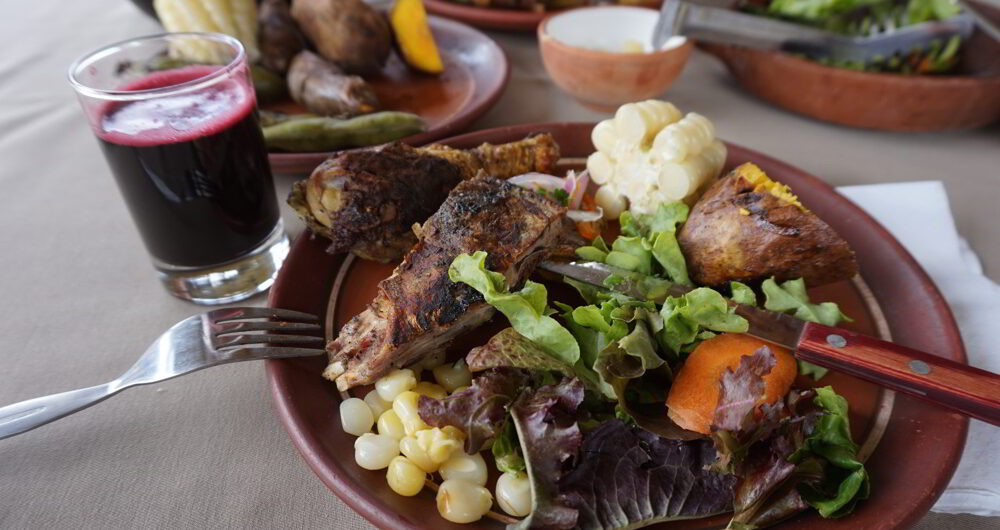On a recent visit to the Sacred Valley, I had the pleasure of participating in and enjoying a Pachamanca Lunch at El Albergue’s Organic Farm at the edge of the town of Ollantaytambo.
Pachamanca Lunch in the Sacred Valley
Peru is fast gaining a reputation as a destination for gastronomy and culinary travel. Along with the award-winning fine-dining restaurants in Lima are the stunning local ingredients and ancient cooking methods that inspire them. Without this rich heritage of food, Peru’s famed modern gastronomy would not exist. Pachamanca is one of these ancient cooking techniques that allows visitors to really understand the country’s rich culinary heritage. It’s a fun and interactive experience, set in stunning natural surroundings, suitable for the whole family. Check out our video below, and read on for all the details of what the experience entails.
What is a Pachamanca Lunch?
Pacha means earth and manca means oven in Quechua, the language of the Inca Empire which is still widely spoken in the Sacred Valley and throughout the Andes of Peru, Bolivia and Ecuador. As the name suggests, pachamanca is a cooking method in the earth, but is so much more. I had read a lot about it, so was very excited to finally be able to watch and enjoy it.
Pachamama – Mother Earth
For the Inca, pachamanca was not an everyday meal preparation. It was used for special occasions and heavily ritualised. The close connection between the food and the earth where it’s prepared is a celebration of and a way of showing reverence to Pachamama, mother earth.
For the pachamanca at El Albergue, chicken, lamb and pork are sourced from local farmers, and a multitude of colourful Andean potatoes, sweet potato and habas (green lima beans) from the farm itself. The meat is marinated with local herbs from the farm.
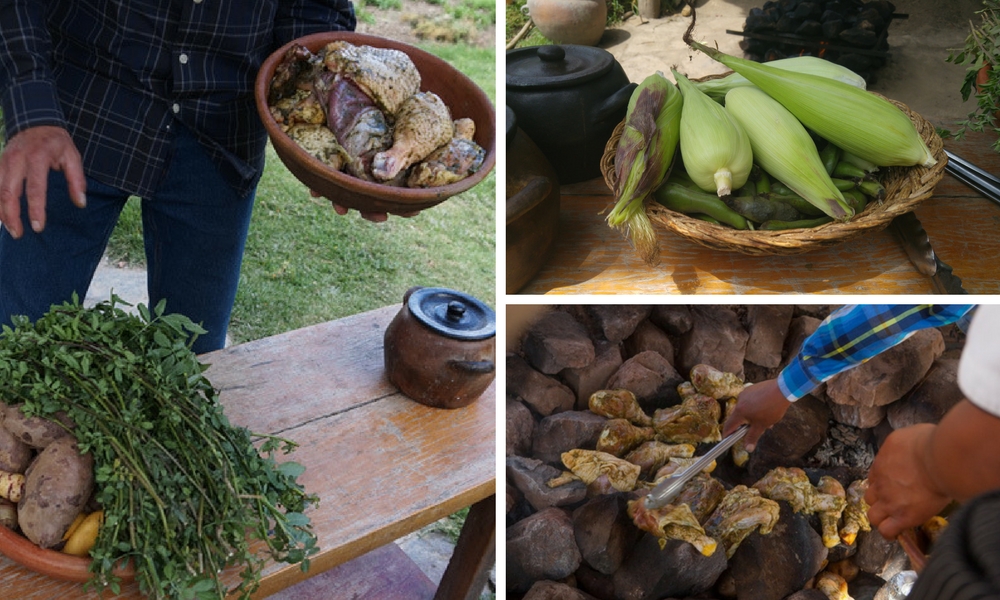
The Pachamanca Lunch Preparation
At Albergue your private guide shows you the ingredients and explains what’s happening at each stage of the process. It’s up close and interactive, and a fantastic experience.
The first step involves preparing the stones, which are local granite rocks, arranged around a wood and charcoal fire to heat them up. Once they are extremely hot, the stones are arranged in a pit that has been dug in the earth. The ingredients are arranged on the stones, in the order of cooking time required.
The potatoes and sweet potatoes go in first, and are covered with stones. Then the meat is laid in, skin-side down and sizzling as the fat touches the hot stones. They are quickly covered with more hot stones, and in next go the ears of corn.
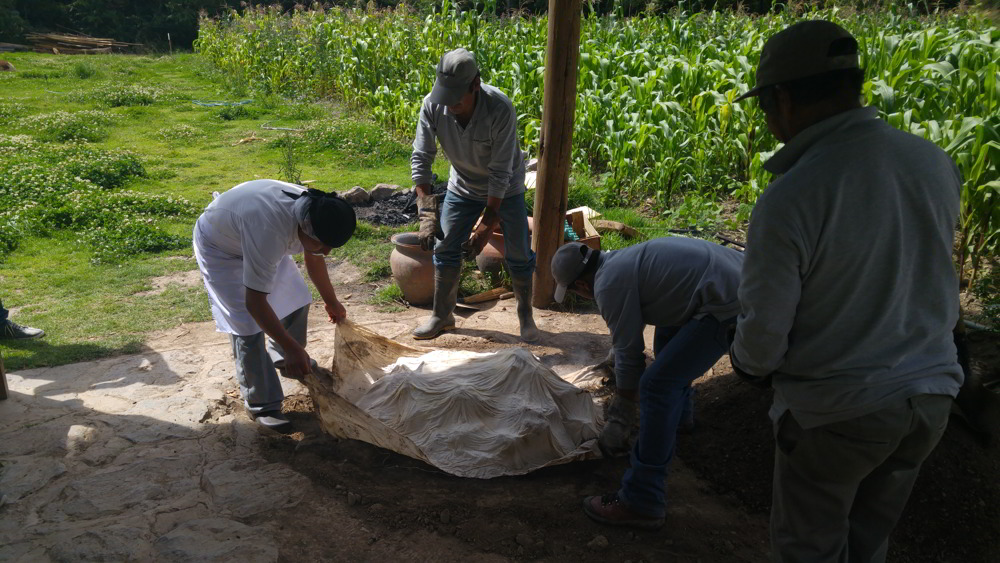
The whole thing is covered in herbs – local huacatay, which is related to marigold. The habas, which don’t need much time or intense heat, are laid on top to slowly cook from the heat and aromas permeating upwards. The mound of stones and food is then covered with an organic cloth – anything synthetic would be singed. Finally, the entire mound is covered in earth, carefully checking that there are no gaps for steam to escape.
Natural Earth Cooking
The cooking time depends on how big the pachamanca is – how much food is in there and how hot the stones are. I was surprised to hear that our meal would cook in only 15 – 20 minutes! Anyone who casually walked by now would never guess that the unassuming mound of earth was secretly cooking a delicious meal within.
Touring an Organic Farm
While we waited for our underground lunch to cook, we enjoyed a tour around the farm by Joaquín, one of the owners. The impressive lot is located on ancient Inca terraces, on land that has been cultivated for centuries. They grow a variety of vegetables, fragrant Andean herbs and flowers and keep a small amount of livestock including turkeys, pigs, sheep and llamas.
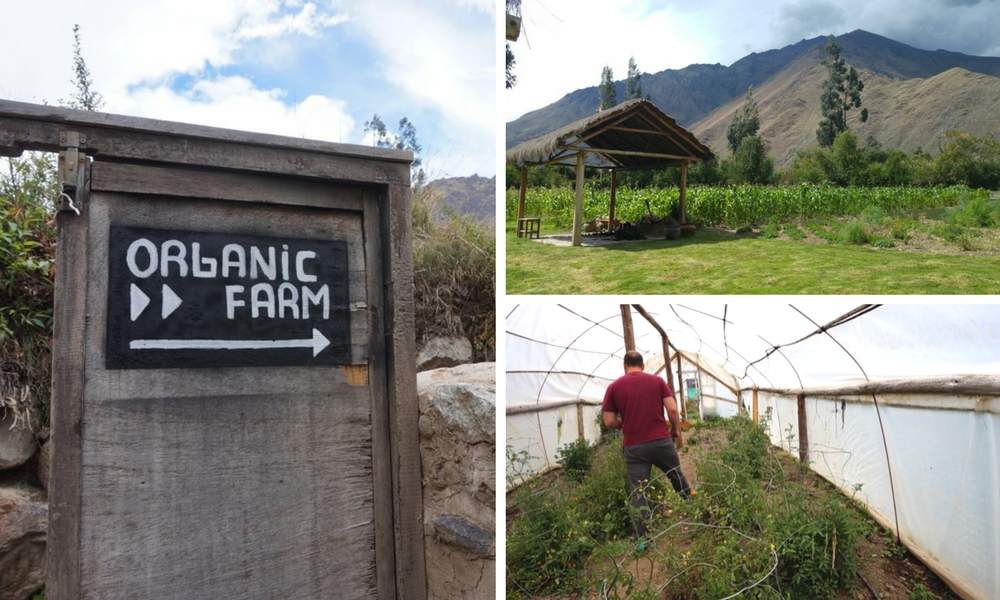
Sustainable Food Production
I was impressed by the approach and ethos of the farm – the emphasis is on producing sustainable produce for the hotel, in the most natural, unobtrusive way possible. Joaquín explains that a big problem in the Valley is pollution from agriculture – with pesticides running into and polluting the rivers, making them unsafe for drinking and domestic use. So, at El Albergue, they avoid any chemical products, using natural methods instead – organic manure from the animals, ancient crop rotation methods and more. If you’re interested in sustainable trips to Peru, El Albergue should be on your list of places to visit!
Organic Coffee and distillery tasting
He then showed us their latest projects – they’re now roasting their own organic coffee and distilling a sugar cane spirit called cañazo, which has been distilled and enjoyed in the Andes for centuries. The distillery even uses the leftover charcoal from the Pachamanca for the filtration process – nothing is wasted at this eco-conscious haven in the Sacred Valley.
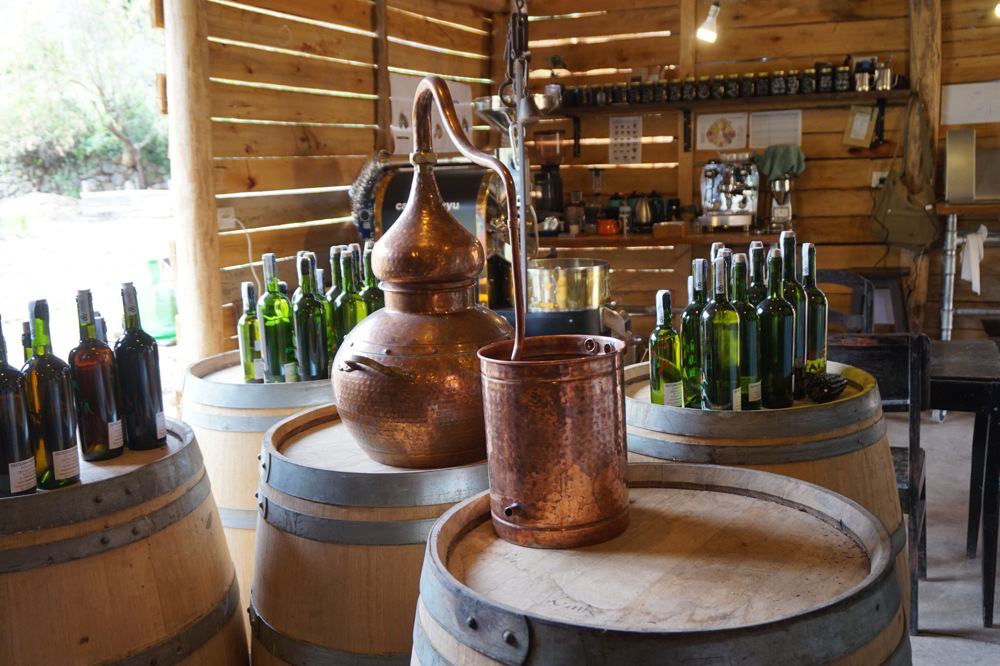
Pachamanca Lunch is served
Once the food was cooked, it was whisked off to be cut up, and then beautifully presented to us at the farm table, which was set up alfresco, under a thatched roof with views of Ollantaytambo ruins. The food that came out of the pachamanca was absolutely delicious – the meat and potatoes were crispy and charred on the outside, with a slight smokey favour, but succulent and soft on the inside. It was served up with a fresh salad from the organic farm, a variety of interesting dips and dressings, and a big jar of chica morada, a refreshing local drink made from purple corn.
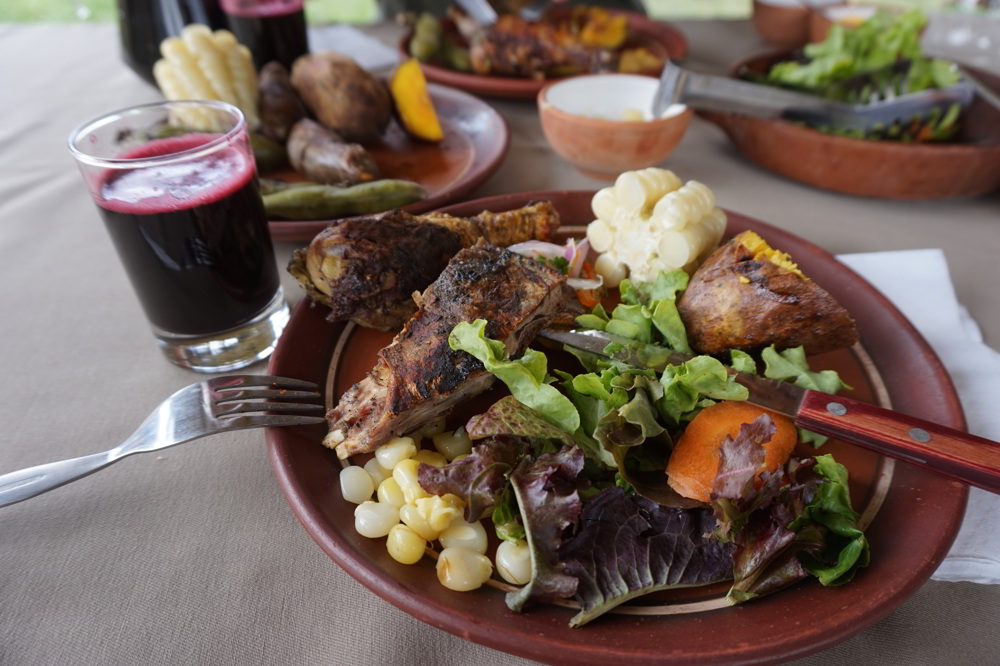
Even though this pachamanca was prepared for visitors, the setting on the organic farm is stunning, and you can’t help but feel the connection to the ancient land around you, knowing that meals have been prepared here, in this way, by the Andean people for centuries. It was really special.
The Location
The property is located right next to Ollantaytambo station and a short walk from the Ollantaytambo ruins and market, so either lunch experience can easily be incorporated into your travels in Peru and is a perfect stop before getting on the train to Machu Picchu.
Aracari specialises in bespoke tailormade Peru food travel. We carefully handpick authentic and memorable experiences like this Pachamanca lunch, to create the perfect trip for you. Have a look at our Peru with Flavor itinerary for an example of culinary travel in Peru with Aracari.
If you’d like to plan a Peru gastronomy trip that includes this experience, contact us or email travel@aracari.com

